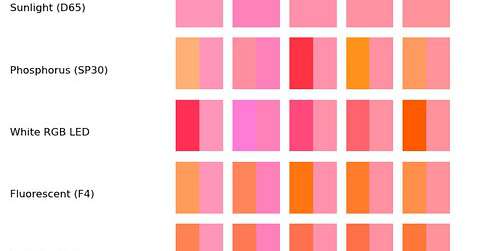
This chart illustrates how metameric colors appear the same under certain illuminants and drastically different under others. Image Source: Flickr user Johannes Ahlmann
Color matching is a basic but critical component of product manufacturing across industries, and manufacturers go to great lengths to ensure color consistency throughout their production process. Sometimes, this is fairly straightforward, particularly if a product is being manufactured using a single material and pigmentation source. However, when the color of multiple, different product types must be visually identical or a product is being assembled using a variety of materials undergoing unique manufacturing processes, color matching becomes more challenging. One of the primary obstructions to accurate color matching in these situations is illuminant metamerism, which must be identified through the sophisticated analytical capabilities of spectrophotometers.


